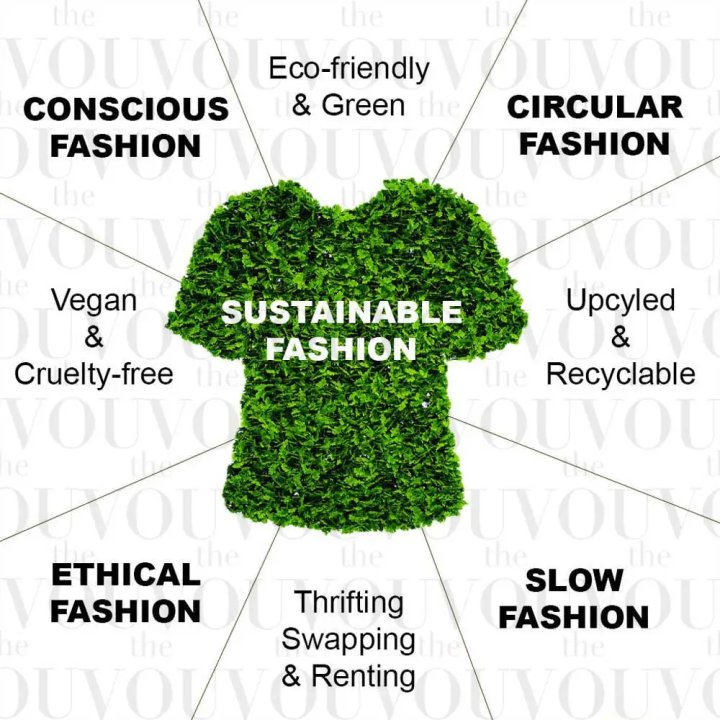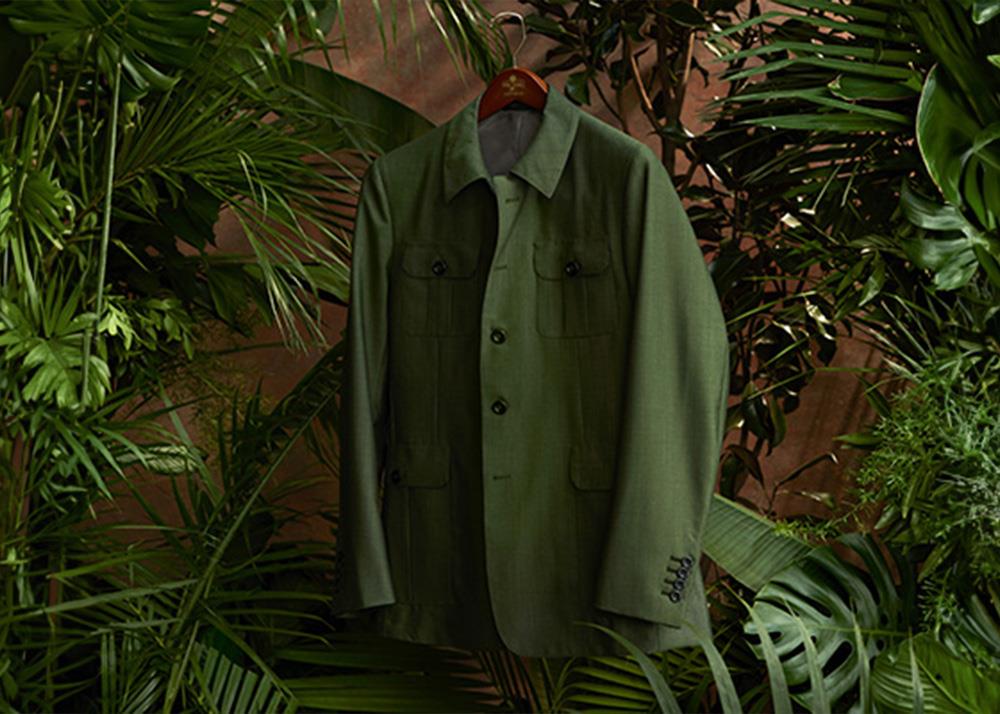How Cape Town Sustainable Fashion is Shaping Eco-Conscious Shopping
How Cape Town Sustainable Fashion is Shaping Eco-Conscious Shopping
Blog Article
Remain Ahead of the Curve by Exploring Ingenious Style Fads
In a sector as vibrant as style, remaining ahead includes greater than just following current patterns-- it requires an exploration of technology. Smart fabrics, for example, are changing garments right into practical work of arts, while 3D printing is changing design processes with its adjustable, waste-reducing capacities. As sustainability comes to be a keystone, innovations like eco-friendly materials and circular fashion practices are improving environmental duty - Cape Town Sustainable Fashion. Additionally, the convergence of technology and fashion proclaims a brand-new period of consumer interaction. Just how, after that, can these arising trends redefine the future of fashion, and what implications do they hold for brands seeking to grow in this advancing landscape?

Welcoming Smart Textiles
In recent times, the fashion sector has observed a transformative shift with the assimilation of clever textiles, an innovative advancement that mixes innovation with textile. This advancement represents not just a blend of appearances and functionality but additionally a substantial leap towards sustainability and customization in vogue. Smart fabrics, likewise referred to as e-textiles, installed sophisticated electronic devices such as sensors and conductive strings within the textile, making it possible for garments to connect with the setting or the wearer.
These fabrics are developed to keep an eye on physical criteria, such as heart price or body temperature, supplying real-time health and wellness analytics. Past health and wellness applications, smart textiles are also being utilized for adaptive apparel, which can alter color or pattern in reaction to ecological stimulations, hence providing a vibrant style experience.
Additionally, the growth of energy-harvesting fabrics that create power from activity or sunshine is leading the method for self-dependent wearable modern technology. This innovation is appealing to ecologically mindful consumers and designers aiming to decrease the ecological impact of fashion. As r & d in this field advancement, wise fabrics are expected to end up being significantly common, improving the landscape of contemporary style with their multifunctional capabilities.
The Surge of 3D Printing
Reinventing the manufacturing landscape, 3D printing has actually become a game-changer in the apparel industry. This advanced modern technology has actually allowed developers to press the boundaries of creative thinking, creating elaborate and tailored garments that were previously inconceivable. By leveraging electronic design and additive production, 3D printing assists in the creation of complex geometries and patterns, allowing designers to trying out new textures and frameworks.
A noteworthy advantage of 3D printing in vogue is its capability to generate on-demand, minimizing waste and reducing supply needs. This performance not just enhances manufacturing procedures however also allows for fast prototyping, making it possible for developers to bring their visions to life in a shorter duration. Furthermore, 3D printing supports personalization to a level unparalleled by typical methods, using individualized fits and distinct styles customized to private customer choices.
The rise of 3D printing has likewise equalized fashion, making it obtainable to arising developers who can now make high-grade items without significant monetary investment in standard manufacturing infrastructure. As technology remains to advancement, the apparel industry is poised to harness the full capacity of 3D printing, checking out new materials and strategies that will certainly redefine just how style is conceived and produced.
Lasting Style Innovations
As the apparel industry grapples with the pressing need for environmental responsibility, sustainable style technologies have actually emerged at the center of transformative modification. The expanding understanding of environmental influence has sustained a shift towards more eco-conscious methods and products. Brands and designers are now prioritizing sustainability, integrating methods that reduce waste and reduce carbon footprints.
One considerable advancement is the surge of round style, which highlights recycling and upcycling to extend the lifecycle of garments. This technique not just reduces waste but also encourages consumers to take on a much more mindful method to apparel consumption.
An additional development exists in the adoption of innovative dyeing techniques that utilize waterless processes or all-natural dyes, consequently minimizing the substantial amounts of water and chemicals commonly utilized in textile dyeing. Additionally, innovations in biotechnology have led to the creation of lab-grown leather and fabrics, supplying cruelty-free and eco-friendly alternatives to standard products. With these pioneering initiatives, the fashion market is making purposeful strides in the direction of an extra sustainable future.

Tech-Integrated Garments
Tech-integrated apparel represents a revolutionary combination of style and innovation, improving exactly how individuals interact with their garments. This cutting-edge domain is noted by the addition of wise textiles and embedded digital elements, improving both capability and see page aesthetic allure. From health and fitness trackers embedded in sports apparel to warmed coats regulated by means of smartphone applications, tech-integrated clothing uses consumers extraordinary benefit and adaptability.
Pioneering brands are driving this fad, concentrating on developing garments that react to environmental stimulations or user commands. As an example, some garments can change shade or pattern in response to temperature level changes, while others integrate biometric sensing units to check health metrics like heart price or tension levels. The seamless assimilation of innovation into fabrics also extends to environmental sustainability, with initiatives to create self-cleaning textiles or garments that get used to weather, hence reducing the requirement for several layers.
In addition, the introduction of wearable innovation is not just restricted to apparel but expands to accessories like watches and glasses, additional broadening the scope of tech-integrated style. As the sector continues to introduce, the capacity for personalization and customization in apparel expands, using customers unique, tech-enhanced fashion experiences that cater to their specific needs and preferences.
Future of Virtual Fashion
Recently, the future of virtual fashion has become a transformative pressure within the market, leveraging improvements in electronic innovation to redefine how style is created, experienced, and eaten. By integrating augmented truth (AR), online reality (VR), and 3D layout tools, designers can currently craft interactive and immersive experiences that go beyond typical style limits. Virtual style permits the production of garments that exist entirely in digital environments, using limitless possibilities for innovation without the limitations of physical production.
This digital shift not only presents possibilities for creative expression however also addresses sustainability issues fundamental in traditional fashion methods. Cape Town Sustainable Fashion. more tips here By removing the requirement for physical resources, online style reduces waste and reduces carbon impacts. Moreover, the increase of virtual fashion straightens with the boosting consumer demand for unique and customized experiences, as online garments can be personalized and tailored to private choices with convenience

Final Thought
The fashion business's future depend on the combination of cutting-edge innovations and sustainable practices - Cape Town Sustainable Fashion. Smart textiles and tech-integrated apparel are improving capability, while 3D printing supplies opportunities for modification and waste reduction. Sustainable fashion, via eco-friendly products and circular techniques, demonstrates a dedication to ecological stewardship. Additionally, online style is positioned to redefine consumer interactions. Adjusting to these trends is crucial for brand names seeking to continue to be pertinent and affordable in this rapidly evolving landscape.
In recent years, the style market has observed a transformative shift with the integration of smart textiles, a cutting-edge advancement that blends modern technology with fabric.As the fashion industry grapples with the pressing demand for environmental duty, lasting style developments have emerged at the leading edge of transformative adjustment.In recent years, the future of virtual style has arised as a transformative pressure within the industry, leveraging improvements in electronic technology to redefine exactly how style is developed, experienced, and eaten. The surge of digital style aligns with the boosting consumer demand for individualized and distinct experiences, as online garments can be personalized and tailored to specific preferences with convenience.
The fashion sector's future lies in the assimilation of innovative innovations and lasting techniques.
Report this page